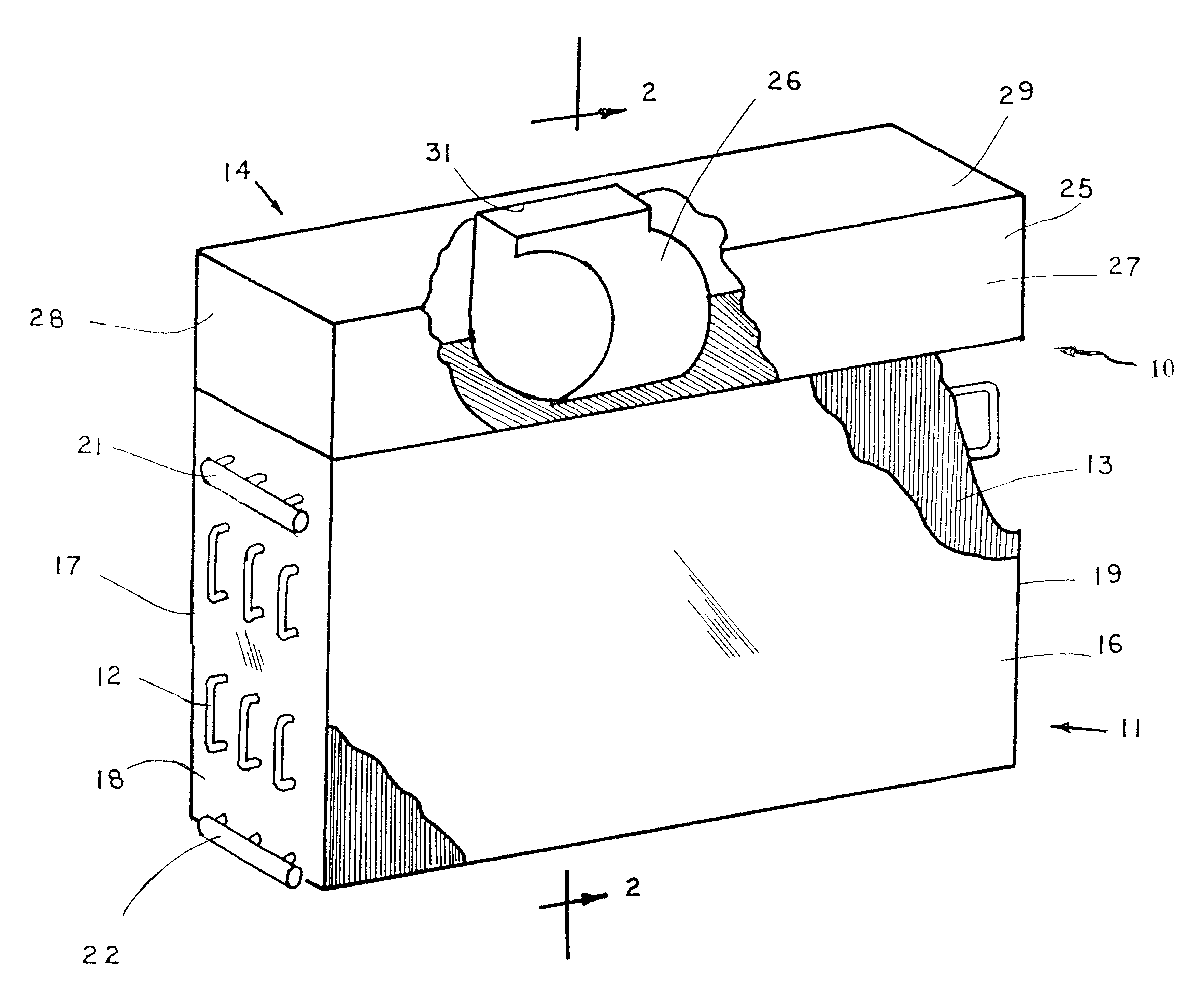Energy-efficient, finned-coil heat exchanger
a heat exchanger and finned coil technology, which is applied in indirect heat exchangers, lighting and heating apparatus, heating types, etc., can solve the problems of reducing the overall volume of the unit, and reducing the actual time during which cooler air is in contact with hotter refrigerant tube surfaces
- Summary
- Abstract
- Description
- Claims
- Application Information
AI Technical Summary
Benefits of technology
Problems solved by technology
Method used
Image
Examples
Embodiment Construction
Referring to FIGS. 1 and 2 of the drawings, a heat exchanger, generally designated 10, for transferring heat from fluid to air broadly includes a housing, generally designated 11, a plurality of heated fluid conducting tubes, collectively designated 12, a series of spaced parallel heat transfer fins, collectively designated 13, and a fan unit, generally designated 14.
The rectilinear housing 11 is defined by spaced front and back walls 16 and 17, respectively, and laterally spaced side walls 18 and 19, respectively, which together define an internal heat exchange chamber area (not numbered). The open top and bottom of the housing 11 provide an inlet and an outlet for the internal chamber area. The front and back walls 16 and 17 define the vertical height and horizontal width of the housing 11 and the side walls 18 and 19 define the depth of the housing 11. As seen in FIG. 1, the housing 11 has a height greater than its depth. The housing 11 has an open upper end (not numbered) from w...
PUM
 Login to View More
Login to View More Abstract
Description
Claims
Application Information
 Login to View More
Login to View More - R&D
- Intellectual Property
- Life Sciences
- Materials
- Tech Scout
- Unparalleled Data Quality
- Higher Quality Content
- 60% Fewer Hallucinations
Browse by: Latest US Patents, China's latest patents, Technical Efficacy Thesaurus, Application Domain, Technology Topic, Popular Technical Reports.
© 2025 PatSnap. All rights reserved.Legal|Privacy policy|Modern Slavery Act Transparency Statement|Sitemap|About US| Contact US: help@patsnap.com



